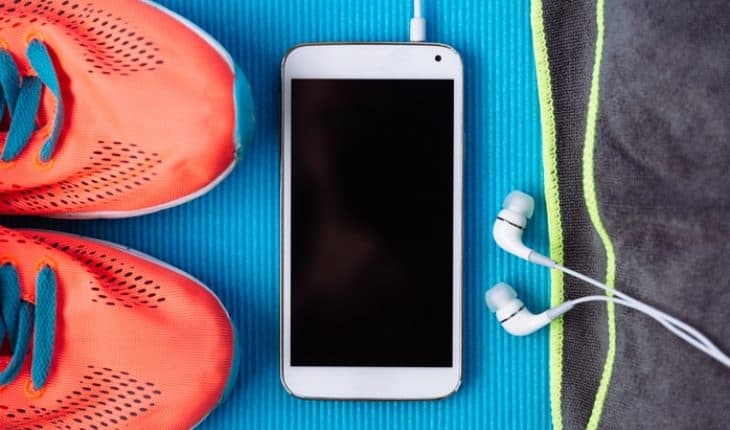Fitness apps could be prescribed by clinicians to help patients recovering from cancer increase their physical activity levels, new research in the Journal of Cancer Survivorship reports.
In the first ever study of its kind researchers from the University of Surrey and Universidad de Oviedo in Spain evaluated fitness apps and their suitability for helping cancer survivors increase their physical activity.
Clinical guidance recommends physical activity and exercise for those recovering from cancer to improve quality of life, reduce fatigue and lessen on-going symptoms. However, limited information is available on how this can be achieved in a real world setting. Smartphone fitness apps could provide a form of ‘virtual’ exercise supervision to patients, but cancer clinicians often lack confidence in what to recommend, as evidence on their quality and content is limited.
During this unique study researchers examined 67 fitness apps on iOS and Android to assess their suitability for improving physical activity for those recovering from cancer. Apps which required payment, the use of wearable technologies or those with inappropriate content for people with cancer (due to negative body images/unfounded claims of effectiveness) were excluded. Over half the apps were available on both iOS and Android, with content in 46 per cent of them focussing on a combination of aerobic/strength training or stretching and 39 per cent providing solely aerobic content.
Researchers screened apps using the Mobile App Rating Scale (MARS) which examines engagement, functionality, aesthetics and information within the apps and for the first time included additional considerations such as awareness and knowledge. Behaviour change techniques such as goal setting and monitoring were also examined and all were rated on a five point scale (one being inadequate with five being excellent).
One fifth of fitness apps examined contained content suitable for people affected by cancer showing that they could be an effective tool in helping to improve physical activity. These focussed on aerobic-based activities and tended to include goal setting, monitoring and feedback which provides reassurance to health professionals as both have been found to be successful in changing health related behaviours.
Researchers found that apps available on iOS were more likely to target attitudes and help-seeking, compared to those on Android, and performed slightly better in terms of content and quality. This information paves the way for providing clinicians the confidence and knowledge to prescribe fitness apps to their patients.
Jo Armes, Reader in Cancer Care and Lead for Digital Health at the University of Surrey, said:
“Fewer than 25 per cent of cancer survivors meet physical activity guidelines which is concerning. Not only will physical activity help improve the quality of life of survivors, it lessens their risk of developing new conditions such as osteoporosis or diabetes.
“However, there is currently little in place to help those recovering from cancer to increase physical activity levels. With over 80 per cent of the adult population owning a smart phone, fitness apps could potentially fill this void by providing easily accessible instructions, helping them to monitor their progress and set goals for themselves.”
Jenny Harris, Research Fellow at the School of Health Sciences at the University of Surrey, said:
“Clinicians are often hesitant to recommend fitness apps to help cancer survivors increase physical activity levels, as they are unsure of the quality and suitability of the information provided. Our ongoing research in this area has found that there are suitable fitness apps to help increase activity levels and this will help equip clinicians with the knowledge and confidence in prescribing them, helping patients to benefit from the positive impact of physical activity.”
- Early onset dementia more common than previously reported - 26th July 2024
- Children’s Exposome Linked to Serum Metabolite Changes - 24th July 2024
- Is Melatonin the wonder drug of anti-aging? - 22nd July 2024






